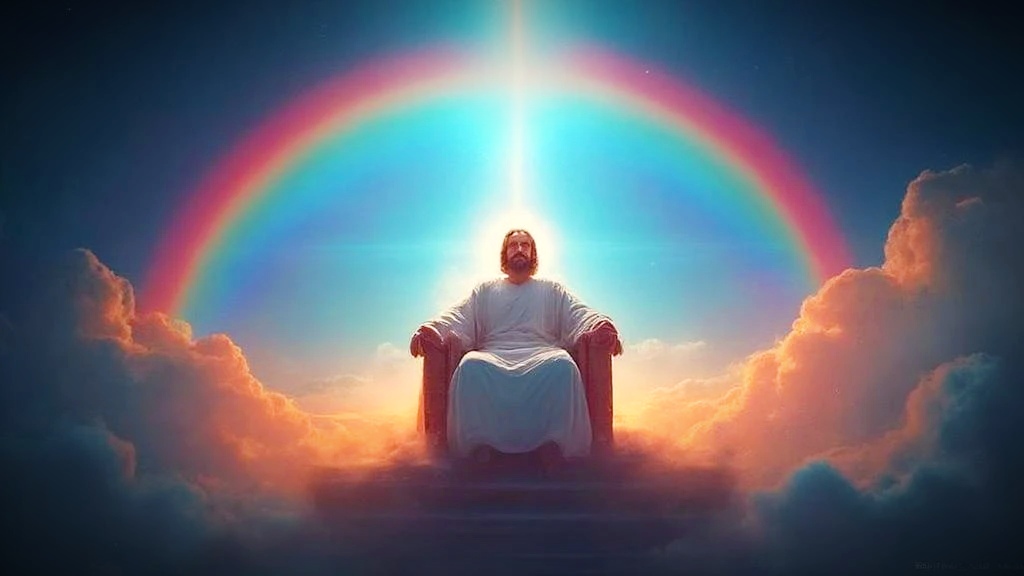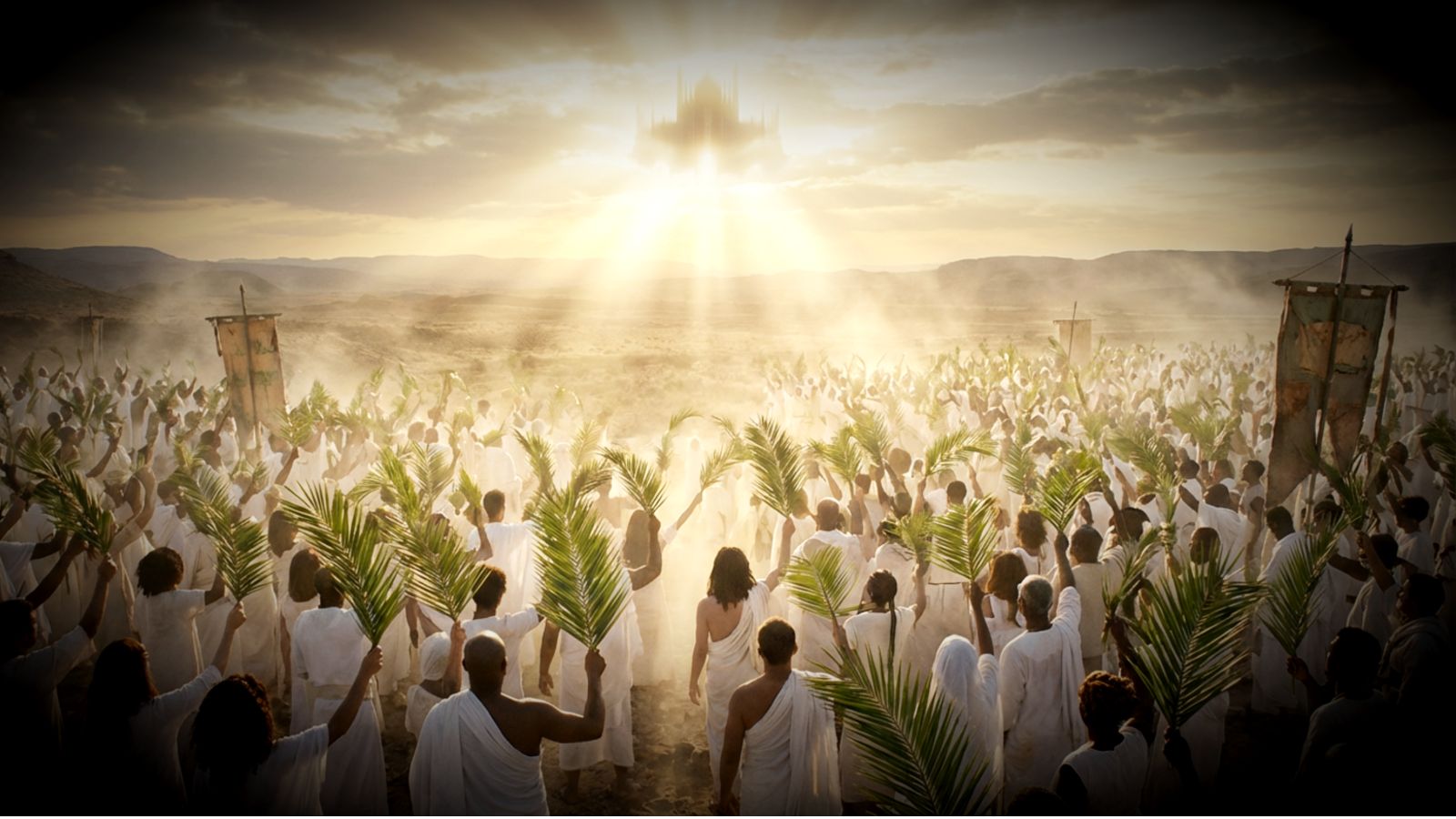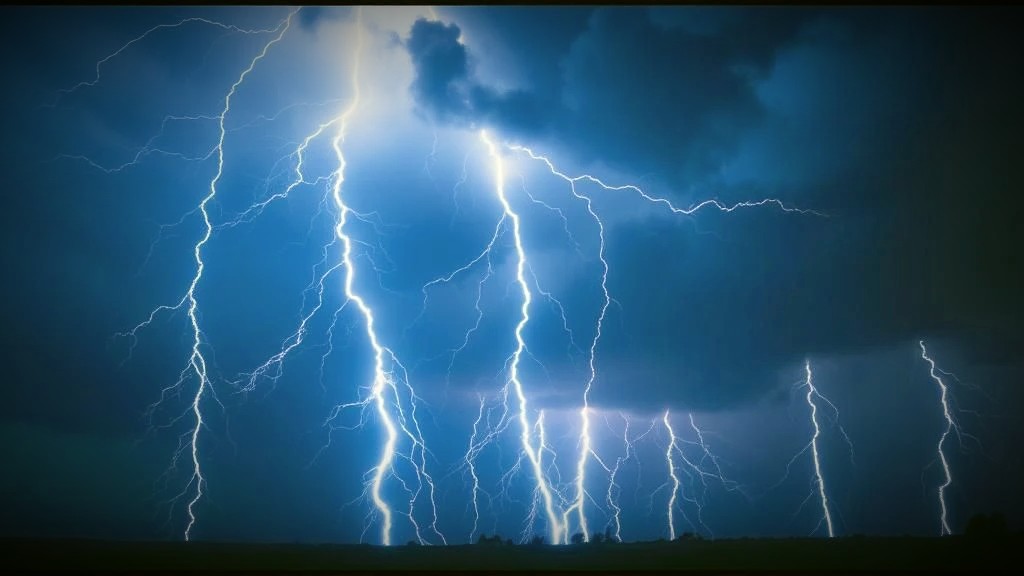Part seven
John was the disciple whom Jesus loved. John experienced the Transfiguration of Christ and, as a captive of the Roman empire, was exiled to the island of Patmos in the Aegean Sea. By inspiration, the aged apostle came to be on the Lord’s day. Although the apostle saw heavenly things, he was not initially transported in vision into the heavens. His perspective was as an earthling. And as a man, he heard a commanding voice, saying: “What you see, write in a scroll and send it to the seven congregations.”
Let John describe what happened next: “I turned to see who was speaking with me, and when I turned, I saw seven golden lampstands, and in the midst of the lampstands someone like a son of man, clothed in a garment that reached down to the feet and wearing a golden sash around his chest. Moreover, his head and his hair were white as white wool, as snow, and his eyes were like a fiery flame, and his feet were like fine copper when glowing in a furnace, and his voice was like the sound of many waters. And he had in his right hand seven stars, and out of his mouth a sharp, long, two-edged sword was protruding, and his countenance was like the sun when it shines at its brightest. When I saw him, I fell as dead at his feet.” – Revelation 1:12-17
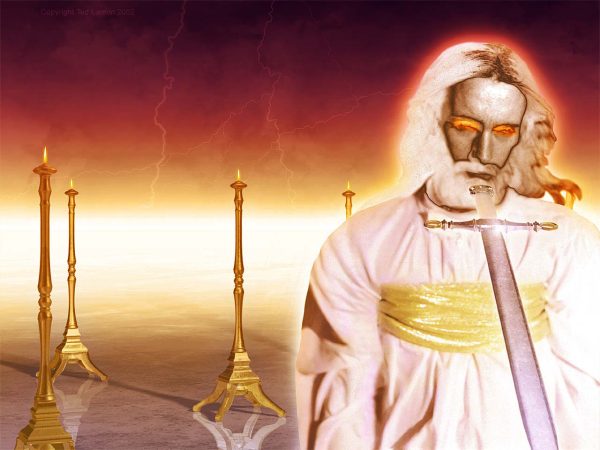 John likely immediately recognized the person speaking to him as Jesus since his countenance shone as the sun—exactly as Christ did in the Transfiguration. If there was any doubt in his mind, the one speaking to him identified himself as the living one who became dead but lives forever and ever. John knew that Jesus had been dead for three days but came alive by the power of God and ascended back to the Farther. John witnessed his ascension.
John likely immediately recognized the person speaking to him as Jesus since his countenance shone as the sun—exactly as Christ did in the Transfiguration. If there was any doubt in his mind, the one speaking to him identified himself as the living one who became dead but lives forever and ever. John knew that Jesus had been dead for three days but came alive by the power of God and ascended back to the Farther. John witnessed his ascension.
But John also knew that Jesus said he was coming again and that his disciples would see his manifestation.
By inspiration, John experienced the parousia. That he was a human when he saw the glorious Lord is evident by the fact that John collapsed at Jesus’ feet as if dead. After writing down the messages to the seven congregations (recorded in the second and third chapters of Revelation), the fourth chapter opens with John being transported by the spirit to heaven. “After this I saw, and look! an opened door in heaven, and the first voice that I heard speaking with me was like a trumpet, saying: “Come up here, and I will show you the things that must take place.” After this I immediately came to be in the power of the spirit, and look! a throne was in its position in heaven, and someone was seated on the throne.”
It is noteworthy that when John saw visions of heavenly things—even God seated upon his throne—the apostle did not fall down as though dead. To underscore the point, John’s face-to-face encounter with Christ in the first chapter is an enactment of the parousia.
As incredible as it was, John’s experience was not unique. Just as elements from the prophecies of Daniel are incorporated into Revelation, so too, Daniel also experienced an encounter with a superhuman who manifested himself in much the same way as John experienced. Similarly, Daniel collapsed in a heap and fell asleep at the feet of the appearance. And just as Jesus touched John and told him not to be afraid, the “man” with a face like lightning and eyes like fiery torches placed his right hand on Daniel and urged him to stand up, calling him a “very precious man.” Are there any who are more precious to God than the chosen whose every hair is numbered?
Another parallel, both Daniel and John were captives in a foreign land when they participated in the prophetic visions. The fact that this event represents the parousia is reinforced by the reaction of the men accompanying Daniel. They did not see the vision; instead, a great trembling overcame them, and they ran away to hide, leaving Daniel alone, lying at the feet of this glorious figure.
“IT IS A VISION YET FOR THE DAYS TO COME”
Just as John envisioned the things to come, Daniel was informed by the angel: “I have come to make you understand what will befall your people in the final part of the days, because it is a vision yet for the days to come.” – Daniel 10:14
And what is to befall Daniel’s people in the final part of the days?
When discussing the sign of the conclusion, Jesus connected the desolation of the holy place to the prophecy of Daniel. The discerning reader will surely take note that the eighth chapter of Daniel foretells that the sanctuary will be thrown down and the holy place trampled upon for an appointed time.
If there is an overriding theme in the Hebrew prophecies, it is the unfaithfulness of God’s people, their due punishment, including the destruction of Jerusalem and the temple, followed by healing and restoration. However, the restoration of the temple foreshadows a spiritual liberation and recuperation to be accomplished by Christ.
The leadership of Jehovah’s Witnesses has been aware of this overriding prophetic theme, and over the years, the Watchtower has produced thousands of pages of commentary and interpretation.
According to the Watchtower’s latest “understanding,” Christians entered spiritual captivity to Babylon the Great many centuries ago, when Christianity was made the state religion of the pagan Roman Empire. It is believed that the Watchtower organization is the restored spiritual estate prophesied. However, this cannot possibly be true.
It is not within the scope of this article to debunk the Watchtower’s voluminous eschatology. Neither is it necessary. Detach everything connected to 1914 and shift it to some point in the immediate future, and you have the picture. If we honestly take note of the central feature of Jesus’ prophecy concerning the conclusion of the system, we can accomplish that. And what is that?
The desolation of Jerusalem.
When David brought the ark of the covenant to the Jebusite stronghold he had captured, Jerusalem became the center of the worship of Jehovah God. When Solomon built the grand temple on Mount Zion and God came down and filled the sanctuary with the cloud of his presence, it thereafter became known as the city where Jehovah had placed His name.
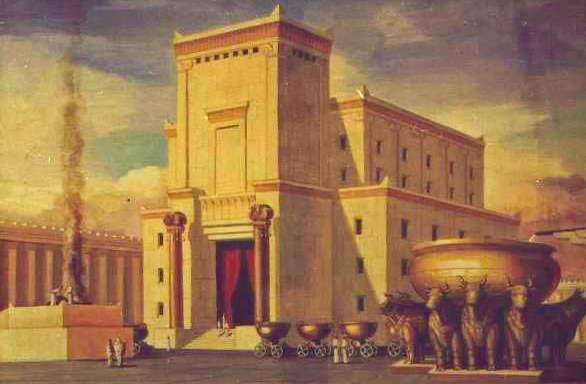 As a child and young man, Jesus traveled with his family to the holy city for all of the religious festivals. As the Messiah, Jesus taught the people in the courtyard of the temple and was executed just outside the walls of Jerusalem. However, Jesus explained to the Samaritan woman at the well that the hour was coming when Jerusalem would no longer be the center of Jewish worship.
As a child and young man, Jesus traveled with his family to the holy city for all of the religious festivals. As the Messiah, Jesus taught the people in the courtyard of the temple and was executed just outside the walls of Jerusalem. However, Jesus explained to the Samaritan woman at the well that the hour was coming when Jerusalem would no longer be the center of Jewish worship.
Even so, Jerusalem became the birthplace of Christianity. Jesus made sure that it was when he instructed his disciples to stay in Jerusalem until they received the spirit. After their anointing, the apostles and many others preached in the temple day and night.
When persecution broke out after Stephen and James were killed, all the disciples were scattered except the apostles. Jerusalem remained the headquarters of Christianity. That is why Paul traveled from abroad to Jerusalem to meet with the apostles and older men to discuss the contentious issue of circumcision. Evidently, the apostles were in Jerusalem when the Roman armies came to lay siege, but were called on to withdraw because of a palace coup in Rome.
Contrary to the Watchtower’s teaching, the apostles did not regard the temple as a center of apostasy and false worship; far from it. According to the biblical record, the apostles instructed Paul to go to the temple and offer a sacrifice to quell the rumor that he was preaching an apostasy against Moses.
So, Jerusalem represents Jehovah’s earthly organization that will be trampled upon when Christ comes. To attain salvation, Christians will have to do the unthinkable. They will have to decisively break their attachment to an organization that had been holy to God.
Jesus has already provided life-saving instructions when the crucial moment arrives: “Therefore, when you catch sight of the disgusting thing that causes desolation, as spoken about by Daniel the prophet, standing in a holy place (let the reader use discernment), then let those in Judea begin fleeing to the mountains. Let the man on the housetop not come down to take the goods out of his house, and let the man in the field not return to pick up his outer garment.” – Matthew 24:15-18
Jesus went on to say, Then there will be a tribulation unlike anything that has ever occurred.
During that critical time, the Lord also informed us that false prophets and false Christs will arise and perform great signs and wonders to mislead, if possible, even the chosen ones. Jesus said, “Look! I have forewarned you. Therefore, if people say to you, ‘Look! He is in the wilderness,’ do not go out; ‘Look! He is in the inner rooms,’ do not believe it.” – Matthew 24:25-26
Why may we unreservedly dismiss the sensational reports that Christ is here or there?
“SO THE PRESENCE OF THE SON OF MAN WILL BE”
Jesus stated: “For just as the lightning comes out of the east and shines over to the west, so the presence of the Son of man will be. Wherever the carcass is, there the eagles will be gathered together.” – Matthew 24:27-28
First, to re-emphasize a vital point—a careful reading of Jesus’ discourse reveals that the presence of the Son of man will not take place until after the desolation of what is symbolized by Jerusalem and the holy place.
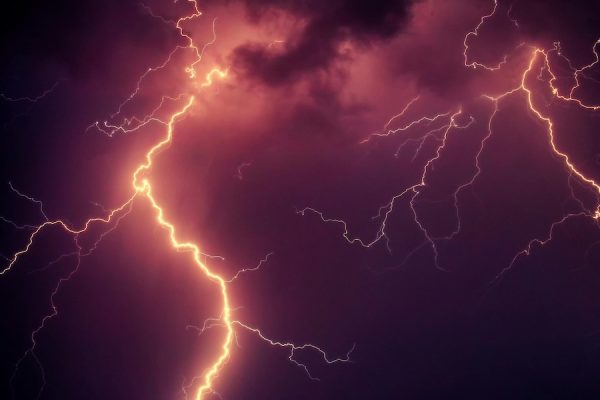 What, though, did Jesus mean by his presence being like lightning that streaks across the whole of the sky?
What, though, did Jesus mean by his presence being like lightning that streaks across the whole of the sky?
We have already established two vital truths. One, the world will not see Christ—only the chosen. And secondly, Jesus will not appear in the flesh. So, reports that he is in the inner room or in the wilderness cannot be true since, presumably, there would be a visible flesh and blood person either in the inner room or out in the wilderness.
The lightning must, therefore, represent something spiritual—why not Christ himself? In Daniel’s vision, he described the appearance as having a face like lightning. No matter where the chosen are on earth—east or west or in between—they will see the “lightning.” They will not have to travel to a particular location. Jesus will come to them, no matter where they are, and no one else will see him.
Since those anointed by the holy spirit have been born again as potential spirits and have a seat reserved for them in the heavenly places, and at the time of their sealing will be just the twinkling of an eye away from becoming immortal spirits themselves, Christ’s manifestation and revelation to them while they are in the flesh must take place in the spirit realm—or someplace in between.
How is it possible for a human to see into the invisible? I do not know. But dare we assume it is not possible?
Science has shown that humans can only see a very narrow band of the much broader spectrum of light. There are longer and shorter waves of light that we cannot see. Some animals and insects can see light that is invisible to humans. Some invisible forms of energy are radioactive.
Although we know Moses did not see the face of Jehovah, he did see an appearance. His face glowed from the encounter, as if he had been exposed to an intense form of energy and light.
We should not rule out the possibility that those born-again spirit sons of God will be given something comparable to X-ray vision to see what is otherwise invisible. Was that not demonstrated in the experience Daniel had when he saw in a vision this great appearance, while the men with him did not see anything but became terrified and ran away and hid themselves?
But what about what Paul wrote that no man can see those who dwell in “unapproachable light”? Consider the context: “I give you orders to observe the commandment in a spotless and irreprehensible way until the manifestation of our Lord Jesus Christ, which the happy and only Potentate will show in its own appointed times. He is the King of those who rule as kings and Lord of those who rule as lords, the one alone having immortality, who dwells in unapproachable light, whom no man has seen or can see.” – 1 Timothy 6:13-16
No man has seen the King of kings and Lord of lords—at least not yet. Please note that Paul said “until the manifestation of our Lord,” which he “will show.” Will it be an invisible showing?
As stated already, the manifestation is an appearance—an epiphany. The Greek word “epiphaneia” even carries the connotation of brightness. Since the chosen are destined to shine as brightly as the sun in the Kingdom of their Father—even while on earth before their departure, having the daystar arise in their hearts—having the One who dwells in unapproachable light come alongside them cannot possibly go unnoticed.
Consider Saul’s experience on the road to Damascus. The brief account in the ninth chapter of Acts merely says, “suddenly a light from heaven flashed around him and he fell to the ground and heard a voice say to him: ‘Saul, Saul, why are you persecuting me?’”
Saul’s travel companions heard Jesus’ voice but did not see the flash of heavenly light. Saul was temporarily blinded, but his fellow travelers were not. Hence, Saul saw a blinding light that others could not see.
Years later, the apostle explained to the Corinthians that over 500 saw Jesus after he was resurrected, but he saw him lastly—the only person to have seen Jesus after his ascension. The fact that Paul listed himself as a witness to Christ’s post-death existence indicates that he saw more than a flash of light.
In 1 Corinthians 15:8, Paul explained the significance of his experience: “But last of all he appeared also to me as if to one born prematurely.” What did the apostle mean that it was as if he were born prematurely? All of the others saw Jesus in human form before he ascended. Saul/Paul saw the manifestation of Christ that the remnant will experience in a face-to-face encounter with the divine.
To be sure, the second coming and the manifestation of Christ will be entirely supernatural and beyond the realm of normal, everyday human experience. Since Jesus is coming to receive home to himself both the dead and the living who are in union with him, why should we accept or expect the ordinary?
End of Part Seven
